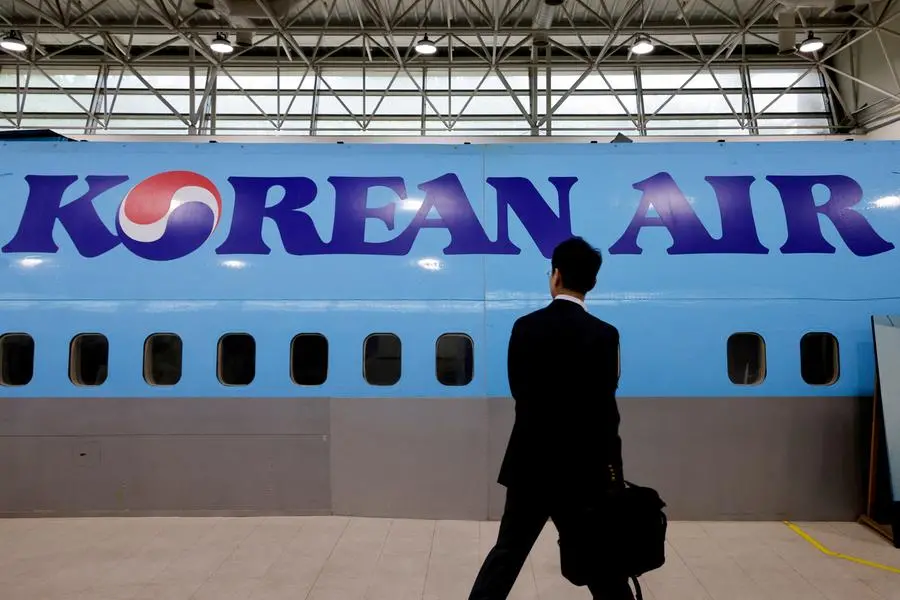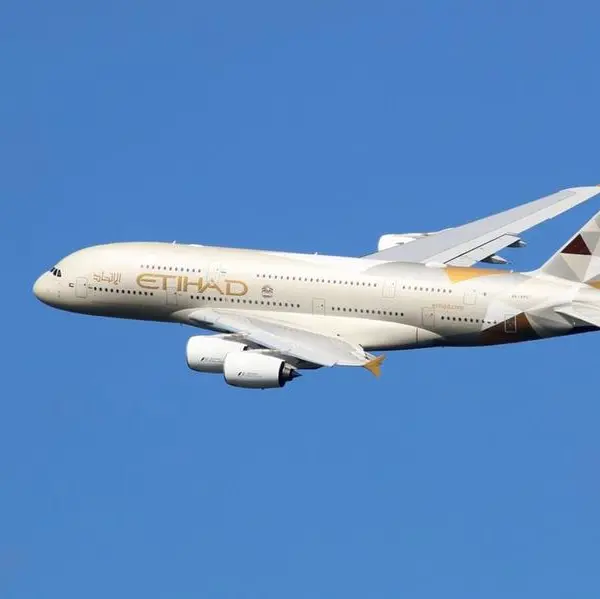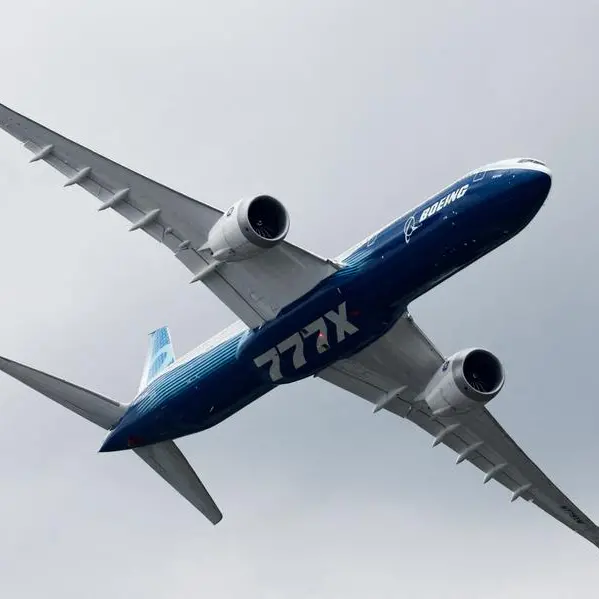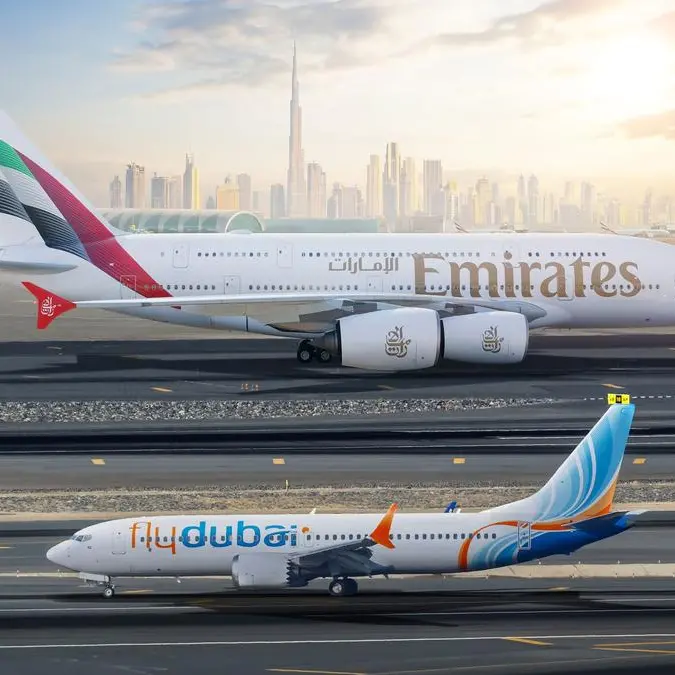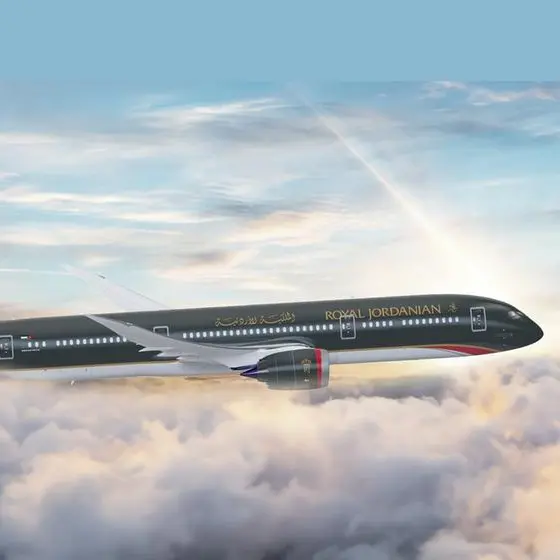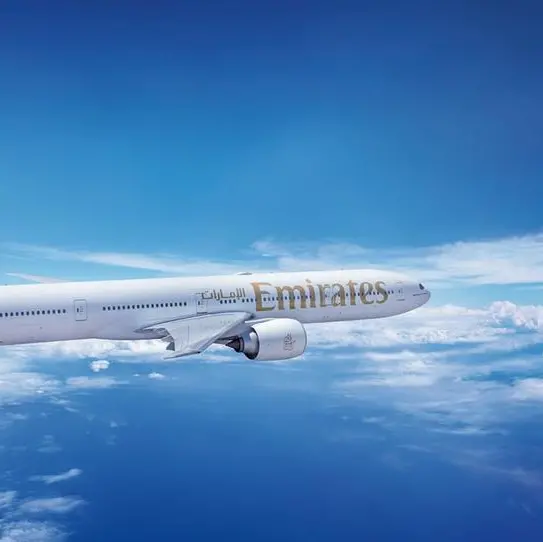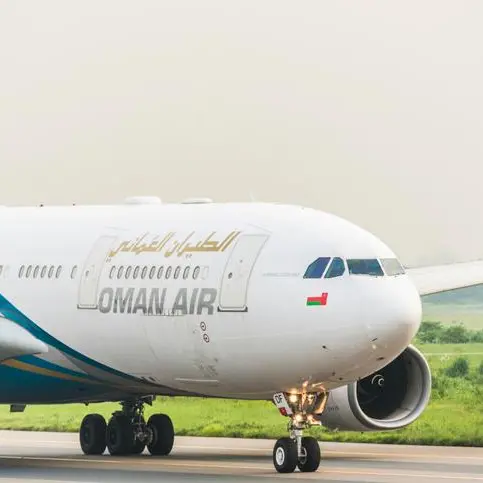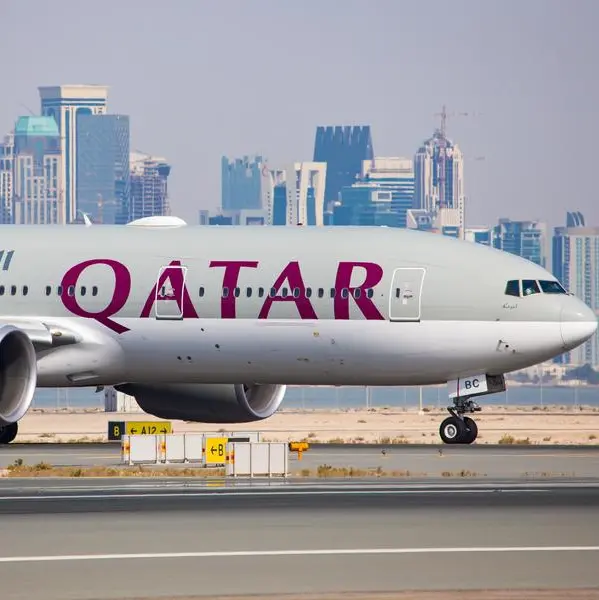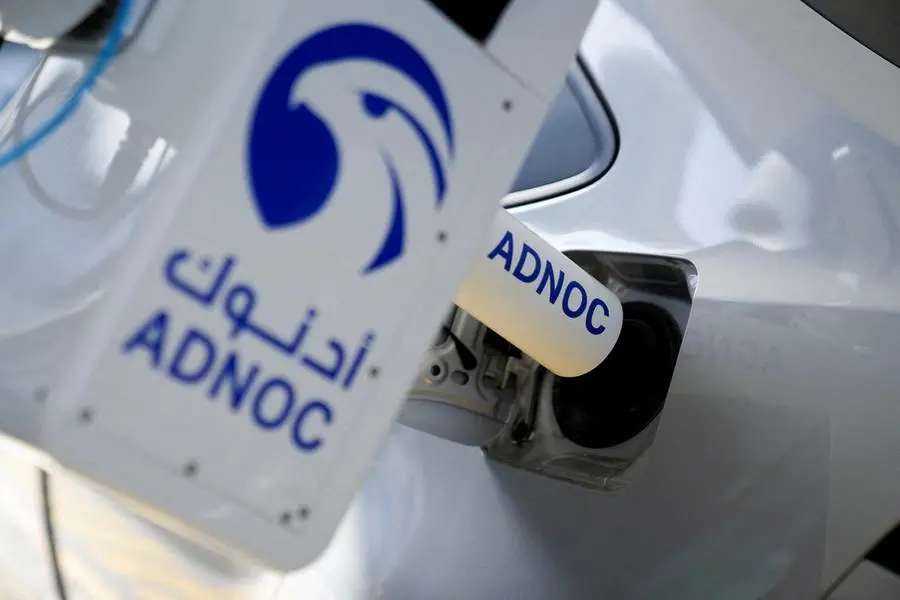PHOTO
FILE PHOTO: A man walks next to the logo of Korean Air airlines during an organised media tour, at the company's Cabin Crew Training Center in Seoul, South Korea, June 27, 2024. REUTERS/Kim Soo-hyeon.
Korean Air on Tuesday launched new aircraft livery and corporate branding that will be introduced across the airline as it combines with South Korean rival Asiana Airlines to become one of Asia's biggest carriers.
South Korea's largest airline in December completed a $1.3 billion acquisition of two-thirds of Asiana, which will be run as a subsidiary for up to two years before integrating under the Korean Air name and corporate identity.
The carrier's planes will now sport the word "Korean", instead of "Korean Air", in a larger, modernised, simplified dark blue font, and the top half of the fuselage will be painted light blue, with a new metallic effect.
"The updated logo aligns with modern and global minimalist branding trends while preserving the airline's distinct identity," the company said.
Korean Air planes since 1984 have had distinctive sky blue and white bodies, and tails decorated with a stylised taeguk, a traditional blue and red Korean symbol for the harmony between opposing forces used on the country's flag.
The new tail design features a simplified taeguk in dark blue only.
The first plane with the refreshed livery is a Boeing 787-10 that was delivered new to Korean Air last year.
Korean Air, a founding member of the SkyTeam airline alliance, was established in 1969 when state-owned Korean Air Lines was taken over by South Korean conglomerate Hanjin Kal .
The Asiana acquisition rescued the debt-laden carrier, which was struggling even before a plunge in travel demand during the COVID-19 pandemic.
The deal, finalised more than four years after first proposed, was hampered by competition concerns and became the longest-ever merger of airlines to complete.
A combined Korean Air group could account for just over half of South Korea's passenger capacity, and would become the world's 12th-largest carrier by international capacity, a Reuters analysis of airline data shows.
Korean Air has said it plans to create a single low-cost carrier by combining Asiana's budget carriers Air Busan and Air Seoul with Korean Air's Jin Air.
(Reporting by Lisa Barrington; Editing by Jamie Freed)
